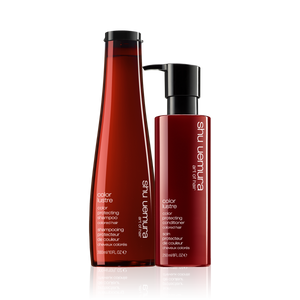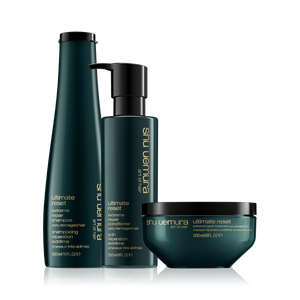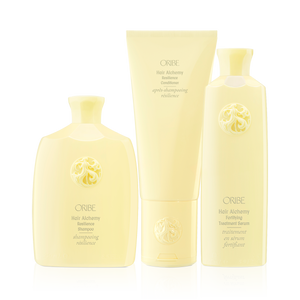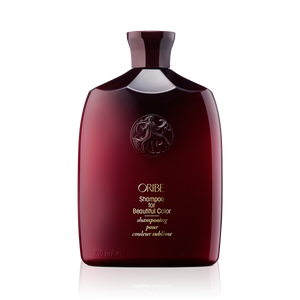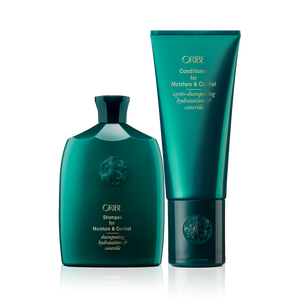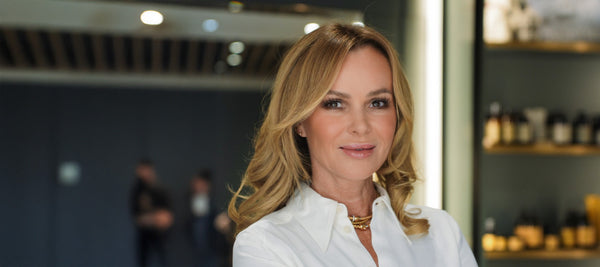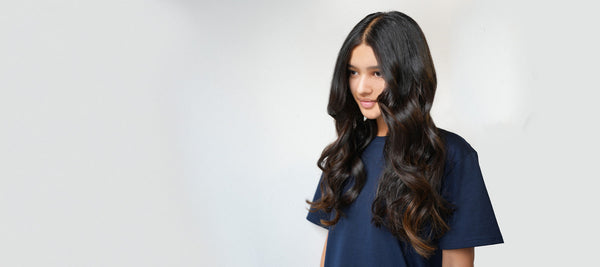Bespoke is beautiful: Our 5 key principles of customised colour
There’s no such thing as one-size-fits-all colour at Paul Edmonds London.
Our colourists all follow the same philosophy, taking into consideration a range of factors to create a bespoke look for every client.
“It's about suitability,” says creative director Joe Savine. “Bespoke colour is something that adapts to a client in terms of things like face shape, eye colour and skin tone.”
But we’ll never compromise the health of your hair for the sake of a trendy look.
“We create healthy, beautiful hair,” says creative director Julie Harper. “Keeping the condition is our number one priority. We want to gain the client's trust in what we say and do with their hair.”
Our colourists pride themselves on building a relationship with clients over time, and they’ll always be honest if they think a certain shade or colour technique could cause damage or won’t be flattering.
“We’re confident enough to say, ‘Actually, that's not going to work,’ if, for example, a client’s hair isn’t strong enough to go bright blonde,” says creative director Charlotte Lewis.
But ultimately, the choice is yours, Julie adds: “I will always give a client the essential information and then allow them to choose which route we go. I'm never going to say to someone, ‘You need to do this.’”
In some cases, it might take several appointments to transition from your current shade to a new look, says creative director Marvin Duche: “That's why we take the time to have a detailed consultation and then we discuss the colour process with the client.”
Here, the team discuss the five key factors they evaluate at a consultation to ensure beautiful bespoke colour at every appointment…
1. SKIN TONE & EYE COLOUR
Most clients come in with an idea of the shade they want. Our colourists will offer their expert advice on how that hue would work with the client’s skin tone and eye colour.
“I think this is one of the reasons why I went into hairdressing – I love the way your hair colour can enhance your skin and make your eyes pop,” says Julie.
“Things like a dark, ashy brunette or a piercing ash blonde can make blue eyes really pop. Copper or red hair is naturally gorgeous if you’ve got green eyes.”
As a rule of thumb, warm hair colours suit warm skin tones and cool colours flatter skin with a cool or pink undertone (your colourist can help advise where you sit on the spectrum), but there are ways to make a clashing colour work, or your colourist will suggest how to adapt the shade slightly.
Joe says: “If you want, for example, a cool blonde tone on your hair, we can make so it doesn't go right to the scalp by creating a darker root, which sits next to the skin, so the contrast isn’t as strong.”
2. COLOUR PLACEMENT
With techniques like balayage (where the dye is painted on freehand) and root tapping (creating the illusion of regrowth), there are endless possibilities to use colour placement to create the most flattering finish.
“Sometimes I might make the fringe a bit lighter or create ‘face frame’ highlights around the face,” says Julie. She is often guided by the haircut as well. “To make the layering stand out, I might add a bit more texture through the hair with the colour.”
The colour placement can also make a big difference in terms of a client’s facial features.
“If someone has a rounder face shape, we probably wouldn’t start the face frame around the cheekbones because that would emphasise the width of her face,” Joe says. “What we would do is take the face frame closer to the root to give the illusion that the face is longer and slimmer.”
3. HAIR TYPE & CONDITION
Assessing a client’s hair type and condition is very important as part of our commitment to always maintain hair health and create colour that lasts.
“Condition is always a massive factor because it prolongs colour,” Julie explains. “If the hair is damaged or porous, the colour won't last.”
A porosity test is used to determine hair strength by looking at individual strands, and your colourist might also take a small clipping to demonstrate the colour result.
For example, Julie has recently had some new brunette clients who wanted a lighter look without bleaching their hair.
“I'll take a cut of their hair during the consultation and tell them to come back the next day to show them what we can achieve with a high lift tint,” Julie says. “They appreciate that we've gone the extra mile so they can see exactly what the colour result will be.”
In some cases, a client’s hair might be too porous to be coloured, Joe says: “If we can't go ahead with the colour, we may suggest a treatment plan.” For example, a series of SAM (Strengthening Acid Moisture) treatments to rebuild the hair strength.
The client’s hair type will also influence the colour placement, Joe continues: “Is the hair straight? Is it fine? Is it curly? I wouldn’t work chunky slices of highlights through really fine hair, but I would for someone with thick or curly hair.”
4. PERSONAL STYLE & TRENDS
While the Paul Edmonds aesthetic is primarily about timeless beauty and natural hues, our colourists always stay up to date with the latest hair trends.
“We follow the international fashion weeks to see what’s happening on the catwalks, we look at red carpet hair with the Oscars, Baftas and the Met Gala, and we pay attention to what social media influencers are doing too,” says Joe.
The team encourage clients to bring screenshots of hair looks they love to the consultation.
“What a client thinks of as a ‘biscuit’ tone might be like beige to us, so looking at images is really helpful,” Julie says.
“And that's where the bespoke service comes in, because we might look at a photo and say, ‘Yes, you can achieve this sort of look, but actually we can make it look better for you by tailoring it slightly.”
5. MAINTENANCE

The final step of the consultation involves talking to the client about what it would take to maintain their desired look.
“It's about assessing what their lifestyle is like,” Charlotte says. “Do they swim, for example? How often do they wash their hair?” For someone who’s very sporty, a vibrant hue like copper would likely fade quickly.
“Most colours will last about six weeks,” Julie says. “After that time you’ll need to refresh the colour with a glaze or tint regrowth.”
However, regrowth will be less obvious if you’ve had subtle balayage or a root tap, Maryvn says: “We do a lot of natural balayage, where we don't go too close to the root. It’s recreating a sunkissed effect, which can be redone just three times a year.”
Looking after your hair at-home can make a huge difference to how well the colour lasts, so our colourists will offer their recommendations for the best products for your bespoke shade.
“For blondes and balayage, I always recommend a moisturising shampoo to keep the hair in good condition and a really good heat protection spray for blow drying,” Julie says.
“But for tints and all-over colours it's more about keeping the vibrancy in the hair, so a colour protection range like Shu Uemura Color Lustre or Ultimate Reset is best.”
Joe is a big fan of Oribe’s colour protection ranges: “For my blondes, I recommend Hair Alchemy plus the Davines Alchemic gold conditioner, and for my brunettes and redheads it's Oribe Beautiful Color. Moisture & Control is also great for coarse hair because you need that hydration to hold the colour.”
A fresh start
At Paul Edmonds London, bespoke colour comes as standard, with the colour team utilising their knowledge and expertise to design and execute a unique look for each client.
By considering a client’s eye colour, skin tone, hair type and condition, plus important lifestyle factors and the latest trends, our colourists will create a beautiful, flattering custom colour look that’s long-lasting and easy to maintain at home.
Ready to switch up your your colour for summer? Book a consultation at Paul Edmonds London.

